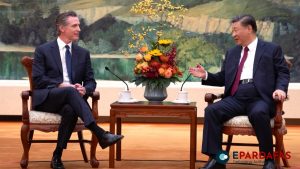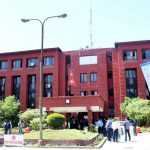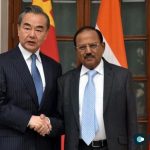
China Faces Critical Juncture at Upcoming Third Plenum

At a national science award ceremony in Beijing on June 24, President Xi Jinping rattled off a list of China’s technological achievements, striking an upbeat tone despite spiraling economic challenges.
China’s latest lunar probe was on its way back to Earth carrying the first soil samples ever collected from the far side of the moon. Domestically produced aircraft were being used for commercial flights, denting the Boeing-Airbus duopoly. Chinese electric cars had upended the global automobile industry.
But Xi warned against complacency. “Although China’s scientific and technological development has made great progress, the original innovation capacity is still relatively weak, some key core technologies are restricted by others, and there is a shortage of top scientific and technological talents,” he said. “It is necessary to further enhance the sense of urgency.”
Chinese Communist Party officials are expected to amplify that message and accelerate a push toward Xi’s goal of technological self-sufficiency by 2035 when they convene this month for a long-awaited meeting known as the third plenum. But this could disappoint investors looking for new answers to the problems that plague the Chinese economy, from a relentless real estate crisis to insufficient domestic demand that has fueled Western accusations of export dumping.
This particular forum, part of a regular series of plenary sessions on China’s political calendar, is known as a launchpad for major economic policies. It was at a third plenum in 1978 that Deng Xiaoping announced the “reform and opening-up” initiative, which paved the way for China’s superpower ascent. The upcoming gathering of about 200 members of the Communist Party Central Committee is seen as especially crucial given the headwinds the country now faces.
Some experts, however, say this third plenum is likely to double down on existing policies rather than chart a new course.
“What the third plenum almost certainly will do is to reiterate the importance of the ‘new quality productive forces,’ which is basically the latest name for the industrial policy-driven growth strategy,” Arthur Kroeber, founding partner and head of research at Gavekal Dragonomics, said at a recent event in Shanghai. “There probably will be some significant announcements or indications of policy to make industrial policies work better, but it will be a reaffirmation of the established policy direction and some efforts to make it work better, rather than a significant shift in course.”
Kroeber suggested the private entrepreneurial sector — critical for creating jobs for young generations — should not get its hopes up. “Will they see this as a positive signal? The answer is probably not.”
The third plenum is one of seven sessions usually held during the five-year term of the Central Committee. The current committee, elected in 2022, had been expected to hold its third one last fall. Instead, state media only reported in late April that the meeting would convene in July to discuss “further deepening reforms.” Last week, the dates were finally announced — July 15-18.
Typically, the third plenum lays out a long-term economic policy blueprint in a communique issued on the day it concludes. The 2013 edition, the first under Xi’s rule, produced a lengthy document declaring that market forces should play a “decisive” role in the economy while reaffirming the “dominant” role of the state sector.
The next third plenum of the era was held earlier than usual, in February 2018, shortly after the Central Committee discussed a revision to the constitution that eventually removed a two-term limit on the president, paving the way for Xi’s current third term. The 2018 gathering focused on reform of the party and state institutions, rather than the economy.
This time, the departure from the conventional timeline has prompted speculation that party leaders are preparing for major policy changes. Others dismiss such notions, citing various announcements and events. A recent article by the National Development and Reform Commission, for example, highlighted the need to remove obstacles toward the development of “new productive forces,” the slogan Kroeber referred to, which is increasingly used by Xi to describe the key to prosperity.
“Manufacturing, technology and self-sufficiency remain at the heart of the party’s economic vision,” Capital Economics said in a recent report. “Certainly, none of the signals so far suggest that the plenum is being held later than usual to make time to agree a change of direction.”
Likewise, Goldman Sachs said in a note, “Rather than a ‘big bang’ policy initiative, we expect a continuation, or even scale-up, of existing reform measures on a multi-year horizon.” The investment bank said this “may include fiscal and financial reforms to contain systemic financial risks and prevent negative spillovers from the prolonged property downturn, as well as continued support for emerging industries and urbanization to boost China’s long-term growth.”
Aside from economic policies, key party personnel changes will also be closely watched. Former Foreign Minister Qin Gang and former Defense Minister Li Shangfu were suddenly removed from their government posts last year. Then last week, Li was expelled from the party over alleged corruption, although Qin remains a Central Committee member.
For many economists, rescuing the property sector should top the to-do list.
Steering investment away from real estate and into high-tech industries has been a key policy initiative under Xi. Tougher restrictions on real estate developers were introduced in 2020, prompting a funding crunch at some of the biggest players including Evergrande, Country Garden and China Vanke. That spread panic among homebuyers, sent prices tumbling sharply across the country and led to liquidation orders and wind-up petitions against some developers.

In a sign that the correction was bigger than policymakers anticipated, authorities since last year have been rolling out measures to ease the pressure on prices. The People’s Bank of China, the central bank, in May said it would set up a 300 billion yuan ($41 billion) financing scheme to encourage local governments to buy unsold homes and convert them into affordable housing. Minimum down payment requirements were lowered, and a floor on mortgage rates was scrapped.
But all this has failed to stop the slide. In May, new home sales prices across 70 cities in China fell 4.3% from a year earlier, based on figures released by the National Bureau of Statistics. Prices of secondhand homes fell an even steeper 7.5%, the biggest drop in at least 20 years, according to data provider Wind.
A few days after the data came out, the Ministry of Housing and Urban-Rural Development held a video conference and asked local governments to “further enhance their sense of responsibility and mission” in implementing state policies.
One Hong Kong-based analyst said there are “still a lot of uncertainties” when it comes to household sentiment — “towards the housing sector, towards economic prospects, towards income growth.”
“We have to be patient about this round of economic recovery,” the analyst said, saying the government’s fiscal policy is likely to play a bigger role as the central bank has limited room to lower interest rates further. Doing so would risk squeezing the already low net interest margins of Chinese banks and compromising their financial health.
New and convincing policy support for the property sector could breathe fresh life into the Chinese stock market. Shanghai’s benchmark SSE Composite Index has declined 6% from its high in May, while its year-to-date performance is roughly flat. An index of mainland-listed property stocks is down more than 10%.
So far, government support for the Chinese capital markets has also focused on tech self-sufficiency — a priority as the U.S. works to restrict China’s access to advanced and sensitive technology. The State Council recently announced measures aimed at strengthening oversight of the tech-focused STAR market on the Shanghai exchange.
“My impression is that the top leadership actually is pretty comfortable with the way things are going,” Kroeber of Gavekal Dragonomics said. “We’re seeing domestically, a reallocation of capital away from the old sectors from infrastructure into new sectors” such as green energy and semiconductors.
“One of the reasons that you have not seen more fiscal support for the economy is that they don’t think it’s really necessary. The costs of the current economic policies both domestically and internationally, need to become much, much higher before you see the significant reorientation in Chinese policy.”
- Recording Statements of Defendants, Including RSP President Rabi Lamichhane, Begins in Kaski Court
- China Warns U.S. Over Taiwan Military Aid, Accuses Washington of ‘Playing with Fire’
- 101st Birth Anniversary of Nepali Congress Founding Leader Krishna Prasad Bhattarai Commemorated
- Nepal’s Exports Rise by 16.5% in Five Months Amid Trade Deficit













Comments